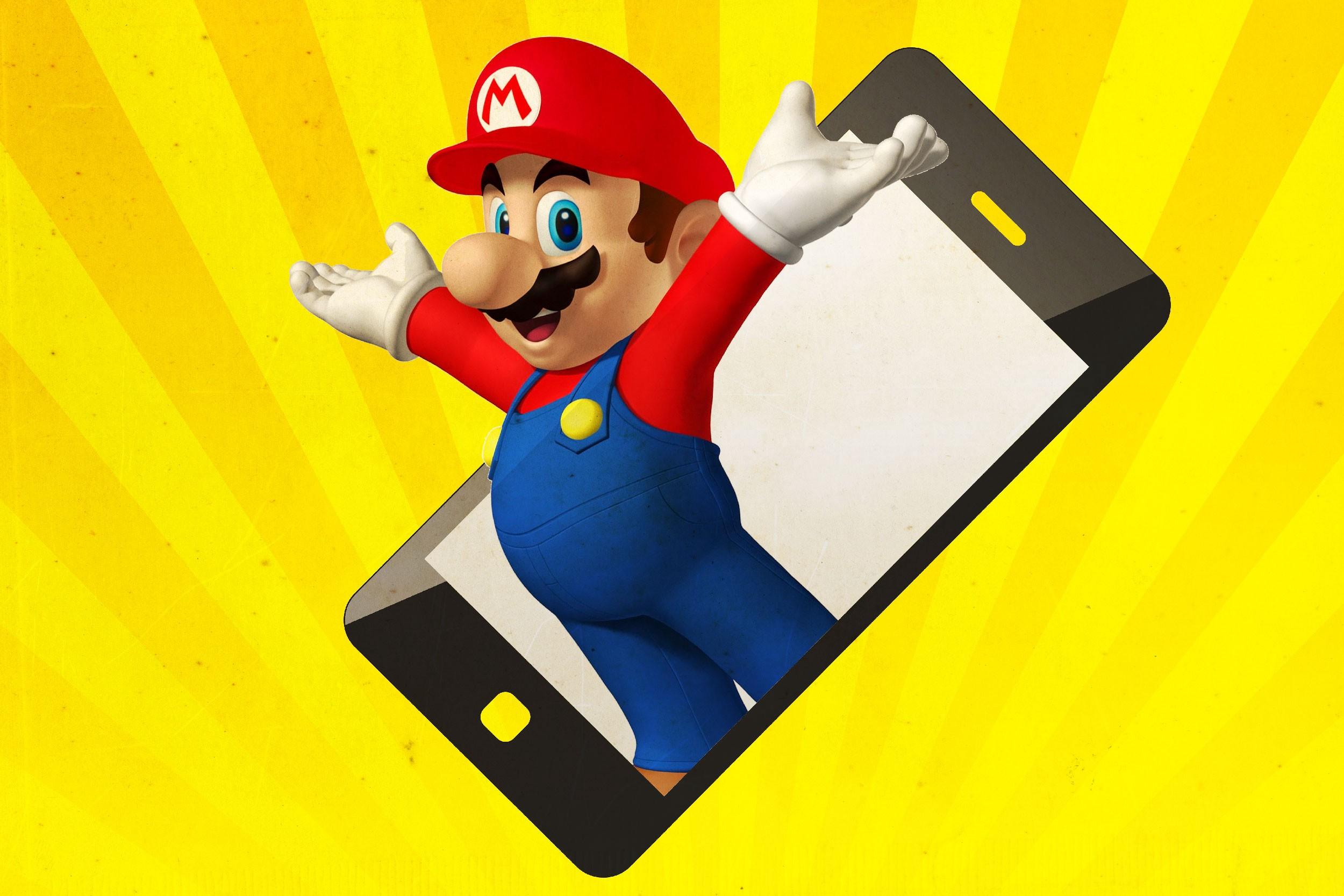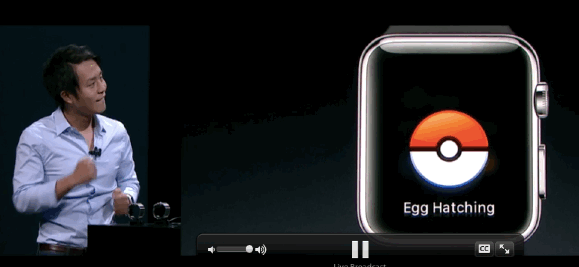
The biggest surprise at Apple’s unveiling event for the iPhone 7 last week wasn’t the company’s courageous axing of the headphone jack or self-serious description of its newly-designed color, “black.” It was the appearance onstage of legendary Nintendo game designer Shigeru Miyamoto to announce that his company is developing its first mobile platformer, Super Mario Run, for iOS.

Finally. Nintendo is arriving at the mobile gaming party (not yet a Mario Party, sadly) nearly 10 years late, though the company has been synonymous with gaming on the go for almost three decades. The Game Boy, an invention of the late, great Gunpei Yokoi, popularized portable gaming globally in 1989. The ’90s Pokémon craze spawned a television show, movies, a card game, and an amusement park, but it was anchored by a Game Boy RPG. And the company’s Nintendo DS, whose touch screen predates the iPhone’s by three years, became the best-selling handheld of all time in the 2000s. Point is, no one knows more about portable gaming than Nintendo.
So why did the legendary developer let Angry Birds hog the mobile spotlight for so long? Much like Apple, Nintendo believes in tightly integrating hardware and software to create a unified experience. By building its own handhelds, the company is able to craft unique games around experimental technologies and form factors. Sometimes it works (dual screens) and sometimes it doesn’t (virtual reality), but there’s never any mistaking Nintendo’s quirky touch.
In 2016, though, fewer customers are willing to pay up for that Nintendo magic. The company’s DS follow-up, the 3DS, has lagged badly behind its predecessor in sales, while its latest home console, the Wii U, has been an outright failure that plunged the company into the red. To assuage stockholders, the company vowed to get with the times and begin leveraging its IP in new ways — that means more Nintendo properties at theme parks, in movie theaters, and in the App Store.
So far, the biggest hit in Nintendo’s new mobile strategy wasn’t even developed by Nintendo. Pokémon Go, the augmented reality collectathon that briefly took over not just the internet but the IRL world this summer, was created by Google spin-off Niantic Labs. And the byzantine ownership structure for Pokémon (great to read about if you’re a double nerd that likes both video games and complex legal arrangements) means that Nintendo won’t even realize much profit from that title.
As for the actual Nintendo games? The jury’s still out. The company’s first mobile title, Miitomo, has been a success, but it’s more of a social networking app than a real game. Super Mario Run will be the first full-fledged action game, but instead of being a traditional platformer, Mario will run across the screen automatically, a la Temple Run. The “endless runner” genre has already brought morning commuters a bland intermingling of distraction and delight for years, so it’s a little disheartening to see the most innovative video game company of all time (don’t @ me on this; you will lose badly) cashing in on a played-out genre.
Sadly, that may be as far as Nintendo’s mobile ambitions extend. Despite its current hardware struggles, the company is set to unveil a new platform before the end of the year. Code-named NX, the new system is rumored to be a handheld/console hybrid that will allow Nintendo to develop its biggest titles on a single architecture (the company has been criticized in the past for being spread too thin between console and handheld game development). Nintendo’s future is riding on the NX, not Super Mario Run. The company sees its smartphone games as a way to promote its iconic IP and hopefully drive consumers to purchase the real, more expensive McCoy on Nintendo-built platforms. “As we continue to develop Mario games for our own platforms that have more robust action and those sorts of elements, we think those will be appealing to the audience playing Super Mario Run on mobile devices,” Miyamoto told Time last week.
But what if Super Mario Run turns out to be a Pokémon Go–size hit? Or what if the NX flops? Nintendo may be forced to take mobile gaming more seriously in the near future. These are the franchises the company should bring to smartphones first.
‘Animal Crossing’
If you never had a months-long period in the early 2000s when you were really into Animal Crossing, well, you’re probably well-adjusted socially and bad at the internet. This is a life sim franchise where “life” consists of fishing, digging for fossils, and bartering with an evil raccoon merchant for furniture to decorate your house. It’s all bizarrely addictive, and it would be even more compelling on smartphones. Use the phone’s GPS to populate different parts of the world with unique items and animal neighbors, encouraging users to open the app on vacations. Make an in-game chat app so I can keep up with my animal neighbors. Let me open a virtual storefront so I can sell goods to other players and overthrow the maniacal Tom Nook’s monopoly. Nintendo actually has a mobile Animal Crossing game in the works (along with a Fire Emblem title), but it’ll probably just be an app to draw custom patterns on your furniture and T-shirts. Sigh.
‘Pikmin Go’
The premise of Pokémon Go — scouring the world for important items and creatures — would translate perfectly to Pikmin, the real-time-strategy/adventure game hybrid that began on the GameCube. In each game you’re a tiny astronaut who partners with plant-like creatures called Pikmin to find debris to sell for profit or upgrade your spaceship. Put Pikmin for me to pluck and add to my army in green spaces like parks, and let me harvest junk to improve my rocket ship in city centers. Add a space exploration element so that players can have races or dogfights against each other with their custom-built rockets.
‘Elite Beat Agents’
In 2006, Nintendo released a DS rhythm game about a secretive Men in Black–style government agency that uses well-choreographed cheers to inspire people to solve life’s daily problems. And it was incredible. This cult classic deserves a sequel where we tap and drag our thumbs across the smartphone screen to a cross-cultural grab bag of pop hits (the original featured Earth, Wind & Fire, Bowie, and Ashlee Simpson). Then go the extra mile by partnering with Spotify and creating a training mode where we can tap our way through any song we stream, a la Audiosurf. If this game is exclusive to the iPhone 8, I will buy the iPhone 8.
‘WarioWare’
After rotting our brains with video games for 20 years, Nintendo started an awesome Game Boy franchise that serves as a meta-commentary on how video games rot our brains. In WarioWare, titular asshole Wario develops a series of cheap five-second “microgames” that players have to complete at astonishing speed. The fun comes from having no idea what the game will throw at your easily distracted brain — you may have to master the sport of curling, or successfully lodge an index finger in a booger-infested nostril. It’s basically “Twitter: An Interactive Experience,” and it makes even more sense on a mobile device in 2016 than it did on the Game Boy Advance in 2003.
‘Mario Teaches Emoji’
Mario Teaches Typing was a PC game that helped me learn how to type in the third grade. As you type the on-screen letters, Mario smashes goombas, grabs coins, and the like. Let’s update this for the next generation with a mobile app where Mario shows you the appropriate time to offer praise hands or whip out the eggplant emoji. Fun for all ages!